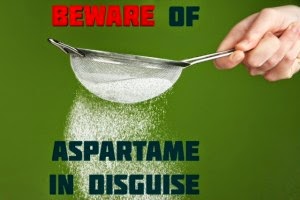| Online: | |
| Visits: | |
| Stories: |
Aspartame: The Toxic Sweetener Made from GM Bacteria
Every time you dive into a product that claims to be sugar-free but is surprisingly, sometimes sickeningly, sweet, you are consuming an artificial sweetener. Just the word ‘artificial’ should raise some concern. Artificial means, quite simply, that a substance was concocted in a laboratory by humans in a non-natural manner.
Artificial sweeteners have been around for a very long time. Who could forget Tab, the cola made by Coca Cola Company which was popular in the 1960s and 70s? After it was discovered that the soda contained sodium saccharin, a controversial coal tar derivative, sales dropped.
The main ingredient in this sulfa-based sweetener is benzoic sulfimide. Persons with sulfa allergies may experience nausea, diarrhea or other allergy-related symptoms. Although early animal studies linked saccharin (sold as Sweet’N Low) with bladder cancer, the FDA removed mandatory health warnings in 2000.
Sucralose is another popular artificial sweetener that is marketed as Splenda, Sukrana, SucraPlus, Candys, Nevella and Cukren. Scientists in search of new insecticides accidentally discovered this sweetener in 1976.
Used in over 4,500 food and beverage products, mostly cereal, candy and sodas, sucralose – a supposedly inert chemical – may promote the onset of type 2 diabetes, and the Center for Public Interest (CSPI) has recently reduced its safety rating from ‘safe’ to ‘caution.’ This downgrade follows an Italian study which linked sucralose consumption to an increased risk of leukemia in lab animals.
Read more »
Source: http://www.riseearth.com/2014/04/aspartame-toxic-sweetener-made-from-gm.html





